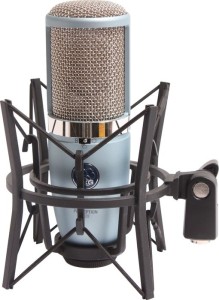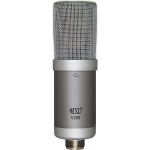One of the most dangerous aspects of any business is setting price for things. I say dangerous because this is often glossed over yet EXTREMELY important aspect of your business, if done right, can propel you and your business into success, and if done wrong, or without the proper thought, can and will destroy you like an Imperial Star Destroyer taking on a Rebel Cruiser!
Ok, I need to confess something. This particular part of business tripped me up on more than one occasion. Years ago, my wife Joyce and I had a small video productions company. Our intent was to offer quality video services for ‘rock bottom low prices!’. Well…that business failed, and I’ll explain why in a bit. Now, I have the company I was born to have, and doing for a living what I was born to do: voiceovers and narration. As an entrepreneur, there are a lot of things we need to do in order to be viable in any industry. Basic things, like deciding on your product (be it your voice or whatever); setting up some sort of accounting system; purchasing equipment; creating your brand, etc. One of the most important things is setting your price for said service or product. THIS can be most difficult. Especially if the service/product you’re offering is YOU (in my case, my voice). Why? Good question. You’d think this was a no-brainer.
Most of us use varying methods to valuate the goods and services we intend to offer. When I and my wife started our video productions company, we decided that a big part of our business philosophy was going to be offering high quality services at very affordable prices. And that’s what we did. We did very good work. We also offered photography services (weddings, parties, etc.) featuring that same low cost concept. Only problem was, clients kind of shied away from us. Eventually, after some digging and research, we found out why. Our prices were too low. Yup. TOO LOW. Came to find out that because we didn’t charge many thousands of dollars to shoot a wedding, people figured we couldn’t possibly be very good. Even though we were. See, perception is 100% of everything. We wanted to offer a high quality product at a price everyone could afford, but that backfired on us. People figured that if we didn’t charge $1,000 per hour, we must not be very good. So, eventually, we were forced to close that company down. Conversely, I knew of a guy near where we live who was a wedding photographer. WAS. Because he had top of the line equipment, a formal education in photography, he figured he could demand top dollar. Even though he was just starting. He listed his services STARTING at $1,500 per hour plus any milage. Guess what? No one hired him. He eventually sold a majority of his equipment and went to work for someone else.
These two extremes made me think, and develop what I call the folded paper concept in setting your worth. Take a plain sheet of paper, then fold it directly in half. The top half represents people like the last guy I mentioned, those who think they’re the best of the best of the best, and set their fees WAY too high right out of the starting gate. Unrealistically high. They don’t take in to account market valuation, skill, talent, etc. They just figure they WANT a lot of money so boom! Now, the bottom half is just the opposite. This side of the paper represents the people who may have the talent, skills and tools to make a good living, but they either lack confidence, or have a misguided mission to make something more affordable. So, they set their fees WAY too low. Unrealistically low. Both halves of this paper are bad.
Now, unfold your sheet of paper and take a look at the middle. See that VERY THIN line that separates the HIGH and the LOW sides of the paper? THAT is where you need to start. THAT is the realistic starting point you need to be at when you first set your price. It’s not an easy thing to do. For a lot of people, they either tend to over value themselves, or grossly under value themselves. Both of these practices can and will crush your new business. How do you set that middle of the paper price?
Well, for me, it was key to find someone I trusted, who was a seasoned veteran in the voice world – my narration coach. After training with him for several months, I asked him what, in his educated opinion, I should be charging per hour for my narration services. And he told me. I was a bit shocked to be honest, because it was a bit higher than I valued myself, but I trust him. He’s heard my work and knows what I’m capable of. That’s my advice to you. Find someone, and not your spouse, boyfriend/girlfriend, brother, sister, parent, child (the reason you want to avoid someone you’re emotionally connected to is because, and let’s be honest here, they’re likely to give you an answer that is wrong. One that they feel will avoid hurting your feelings) who you trust to give you an HONEST answer, and who is IN the field you’re in and ask them. Odds are, that answer will fall RIGHT on that teeny, tiny line in the middle of your folded paper!
Remember, this is just my opinion. Not meant to be a solid, business school concept. Just something I’ve realized, and that’s worked for me. Once you’ve established your reputation in your chosen industry, THEN you can raise your fees to match the appropriate bracket you’re moving in to!
– Stay Groovy!
 s. This one could be considered the Luxury SUV of microphones, and as such, carries a big price tag – $3,599. I’ve never used one of these, in fact, I’ve never even seen one up close. Unless you’re rolling in the dough, or, have been in the biz for a LONG time, this is really just a ‘wish list’ item
s. This one could be considered the Luxury SUV of microphones, and as such, carries a big price tag – $3,599. I’ve never used one of these, in fact, I’ve never even seen one up close. Unless you’re rolling in the dough, or, have been in the biz for a LONG time, this is really just a ‘wish list’ item

